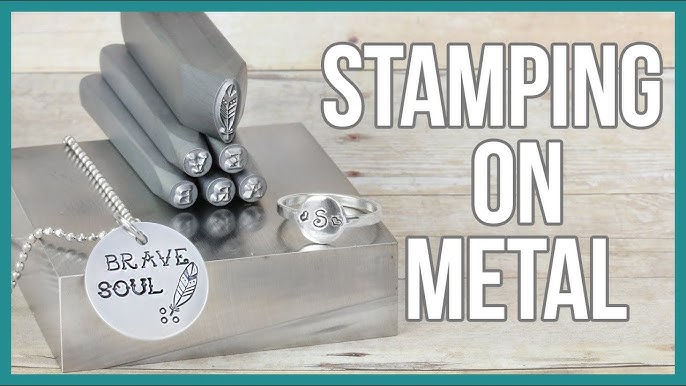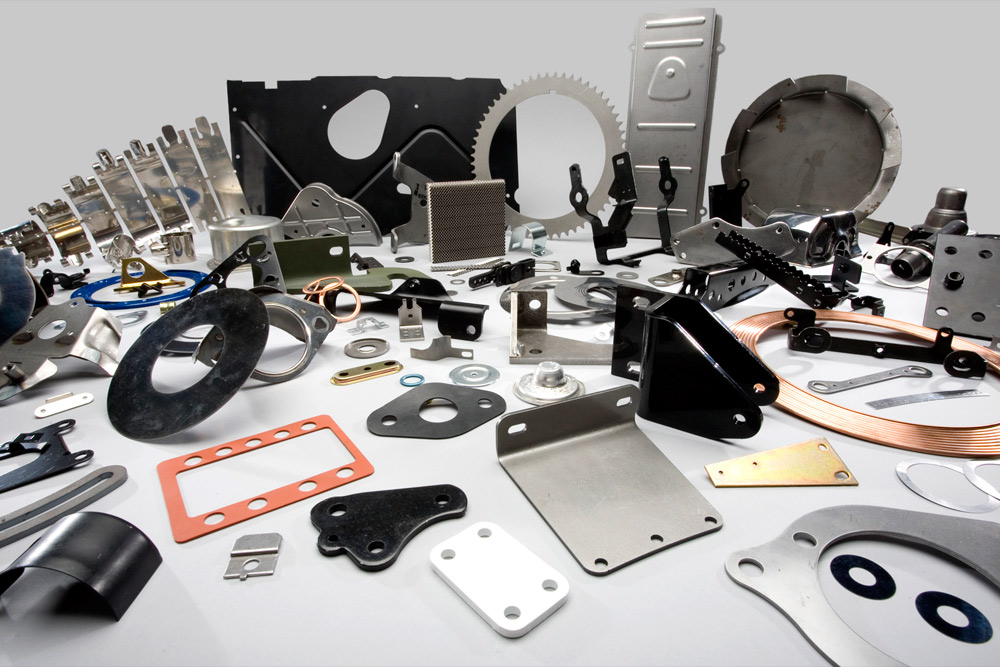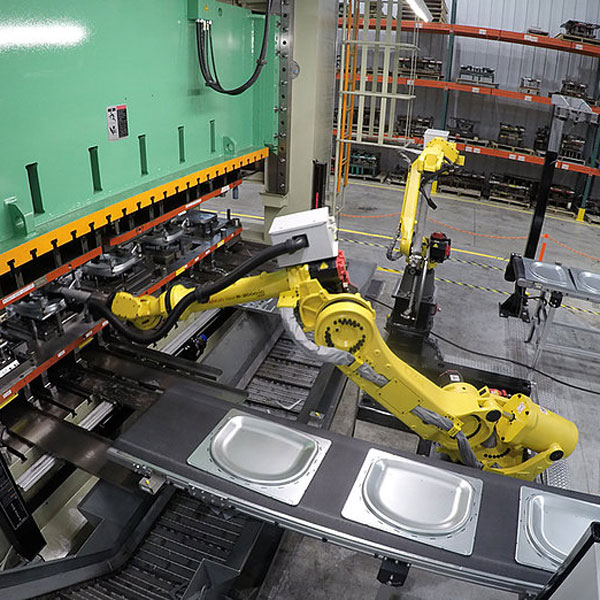The Advancement of Metal Stamping Modern Technology: A Comprehensive Overview
The Advancement of Metal Stamping Modern Technology: A Comprehensive Overview
Blog Article
Metal Stamping Innovations: Elevating Production Processes for Superior Results
In the realm of manufacturing processes, steel marking has long been a keystone technique for generating a range of precision parts. With the relentless march of technological development, the landscape of metal marking is undertaking a considerable improvement. Innovations in this field are not only boosting the effectiveness and high quality of production but are additionally leading the way for brand-new possibilities that were formerly beyond reach. As the sector welcomes these innovative developments, a redefinition of what is attainable in production is underway, encouraging superior results and establishing brand-new criteria for excellence in the field.
Evolution of Metal Marking Methods

Furthermore, innovations in product science have actually brought about the development of high-strength alloys that can now be seamlessly stamped right into elaborate shapes, accommodating a broader range of commercial applications. The assimilation of robotics and synthetic intelligence has even more enhanced the stamping procedure by enhancing rate and precision while minimizing the risk of human mistake.

Effect of Advanced Products
Have sophisticated materials changed steel stamping processes dramatically in the manufacturing sector? By utilizing materials such as high-strength alloys, progressed composites, and ingenious layers, metal stamping processes can now create parts that are lighter, more powerful, and a lot more long lasting than ever before.
These sophisticated products provide premium mechanical residential properties, corrosion resistance, and thermal stability, permitting manufacturers to fulfill the needs of contemporary industries such as aerospace, automobile, and electronics. Furthermore, using sophisticated products in steel marking has actually facilitated the manufacturing of complex geometries and detailed styles that were formerly unattainable via traditional methods.
Moreover, the execution of innovative products has resulted in reduced product waste, reduced manufacturing prices, and much shorter preparations, making metal stamping processes a lot more cost-effective and lasting. As innovation proceeds to development, the influence of sophisticated materials on metal stamping processes is expected to drive more innovation and boost the competitiveness of suppliers in the global market.
Automation in Metal Stamping
The evolution of metal stamping processes driven by the assimilation of advanced materials has actually set the phase for considerable improvements in automation within the manufacturing industry. Automation in metal marking has reinvented manufacturing processes, enhancing performance, accuracy, and overall output high quality. Through the usage of robotics, sensors, and computer-controlled systems, jobs that were lengthy and once hands-on can currently be carried out with unmatched rate and accuracy.
Automation in steel marking not only increases production rates yet additionally makes certain uniformity in the manufacturing procedure. By lessening human treatment, the danger of mistakes is substantially decreased, leading to greater degrees of item uniformity and dependability. Additionally, automation enables producers to undertake complicated stamping jobs that would certainly be impractical or challenging to accomplish manually.
In addition, automation in steel stamping adds to a much safer working setting by minimizing the demand for employees to involve in dangerous or repeated jobs - Metal Stamping. This shift towards automation not just boosts efficiency but additionally leads the means for the future of manufacturing, where modern technology plays a central click here for more info duty in driving operational excellence
Quality Assurance and Inspection Equipments
With a focus on precision and reliability, quality assurance and inspection systems play an important function in making certain product quality in steel stamping processes. These systems are made to monitor every phase of production, from product examination to the end product, to assure that all elements meet the needed standards. By carrying out sophisticated innovations such as optical inspection systems, coordinate determining machines (CMM), and automated evaluating devices, producers can detect even the tiniest inconsistencies in measurements, surface area quality, and general stability of stamped components.

Sustainability Practices in Metal Stamping
Building upon the structure of precision and integrity established via quality control and evaluation systems, the combination of sustainable methods in steel stamping processes is significantly becoming a prime focus for suppliers looking for to lessen ecological influence and optimize resource application. Sustainability methods in steel marking include a variety of efforts targeted at decreasing waste generation, power consumption, and greenhouse gas exhausts throughout the manufacturing procedure.
One key facet of sustainability in metal stamping is the adoption of environment-friendly materials and innovations that promote recyclability and waste decrease. By utilizing recycled products and applying energy-efficient equipment, makers can decrease their carbon footprint and add to a much more lasting production cycle. Furthermore, maximizing production procedures to minimize material waste and energy usage not only profits the get more environment yet additionally leads to cost financial savings for organizations in the future.
Moreover, the application of sustainable techniques in steel marking can enhance brand reputation and appeal to eco mindful consumers. As sustainability proceeds to obtain value in the production sector, incorporating environment-friendly initiatives right into steel marking procedures is crucial for long-term success and competition on the market.
Conclusion
To conclude, steel marking methods have substantially evolved gradually, integrating innovative products and automation to improve making processes. Quality assurance and inspection systems play an essential duty in making certain superior outcomes, while sustainability techniques are progressively being applied to lower environmental effect. These advancements in steel marking have changed the market, resulting in much more lasting and effective production approaches for numerous markets.
Metal stamping, as soon as a handbook and labor-intensive process, has actually changed into a very automated and advanced method of forming steel sheets right into different types and styles.Have advanced products transformed steel stamping processes considerably in the manufacturing industry? By using materials such as high-strength alloys, progressed compounds, and cutting-edge coatings, steel marking processes can now produce elements that are lighter, stronger, and extra durable than ever before.
The development of steel marking procedures driven by the integration of innovative products has actually established the stage for considerable advancements in automation within the manufacturing industry.In conclusion, steel marking techniques have actually substantially progressed over time, including innovative products and automation to boost producing procedures.
Report this page